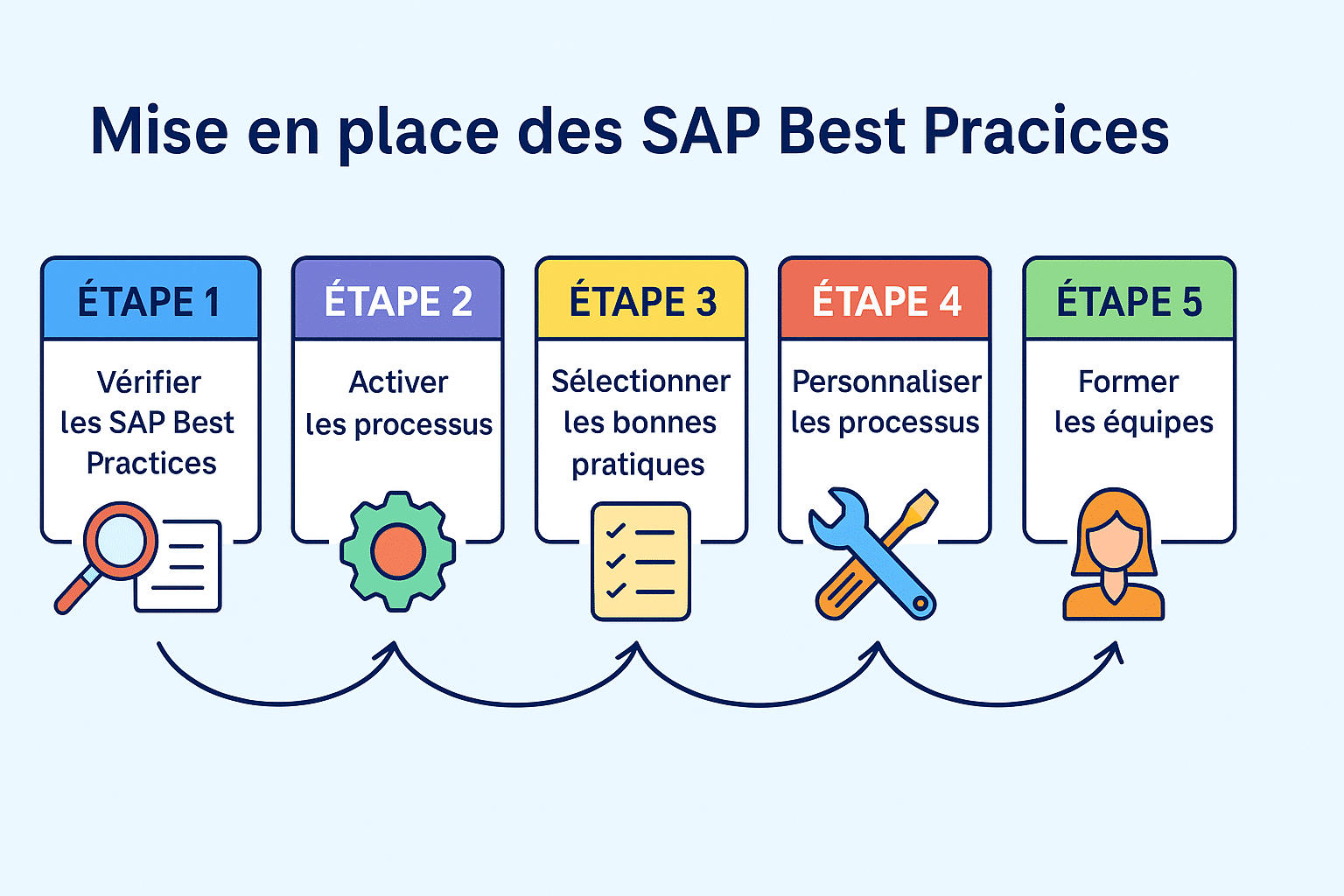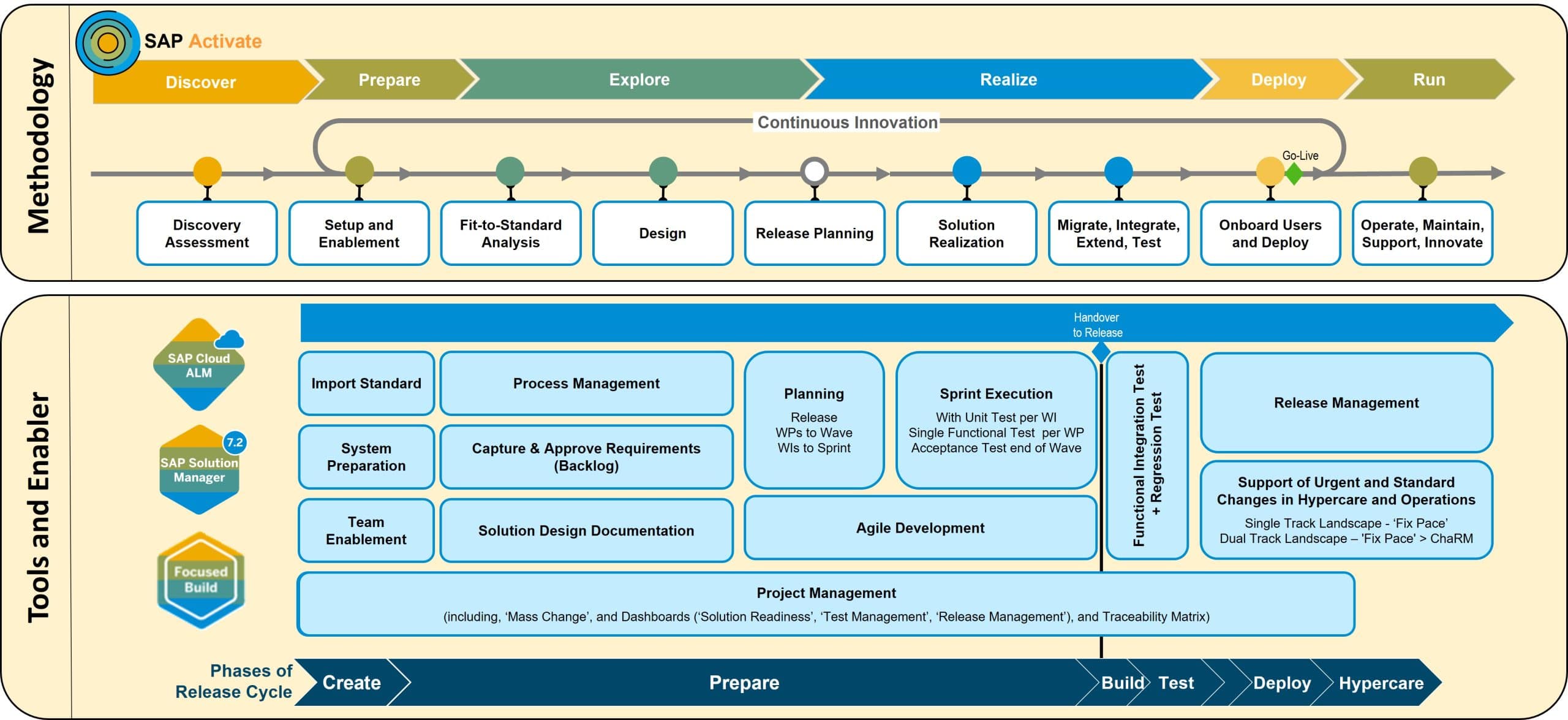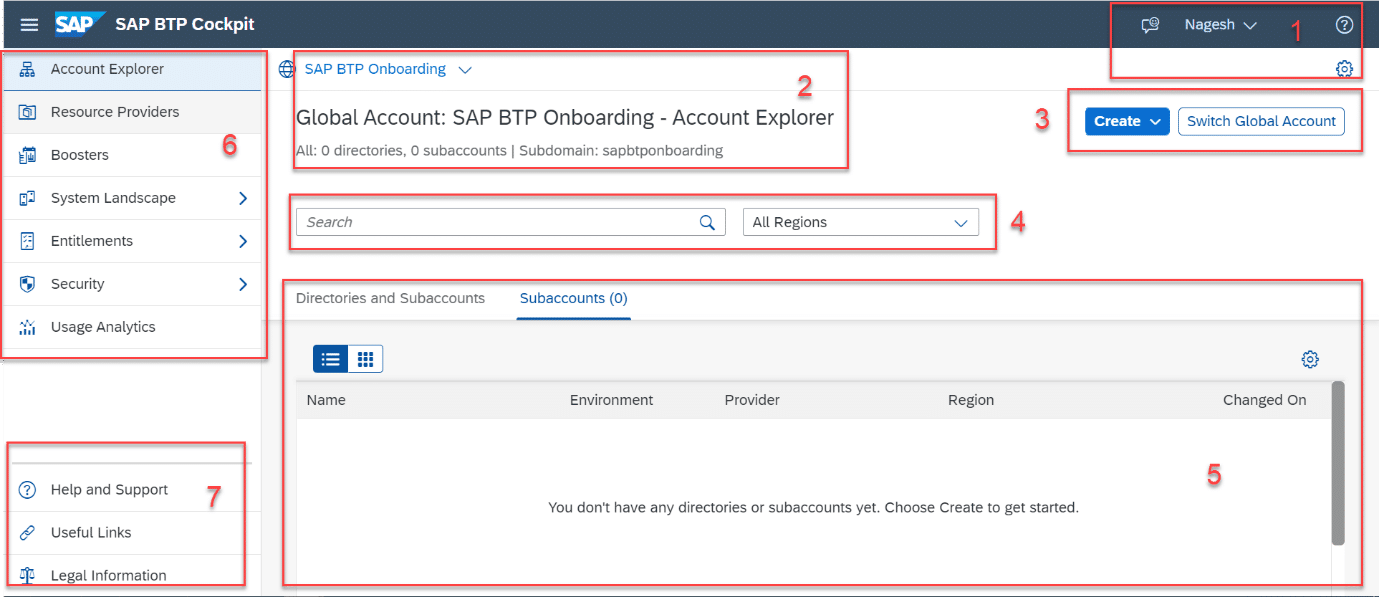SAP Best Practices are preconfigured solutions that enable a quick and efficient implementation of your SAP ERP. But what makes them essential, and how can they be correctly integrated into your business? Discover in this article how to optimize your business processes and avoid common mistakes to succeed in your ERP project.
What are SAP Best Practices?
SAP Best Practices are sets of preconfigured business processes and scenarios offered by SAP, aiming to simplify and standardize the implementation of its ERP solutions. These practices are based on experience accumulated over the years from thousands of implementations across various industrial sectors. Their goal is to enable you to quickly integrate essential processes into your organization, reducing customization needs and optimizing deployment costs.
In other words, they offer you ready-to-use templates, ensuring that your operations meet the highest standards of efficiency and compliance. This reliable and proven way accelerates the implementation of an ERP while ensuring you adhere to the industry’s best practices.

Why are SAP Best Practices essential for ERP implementation?
When deciding to implement an ERP, maximizing efficiency and minimizing associated risks is crucial. SAP Best Practices play a key role in this approach. By relying on globally validated processes, you can save valuable time and ensure your ERP system is configured according to the industry’s best standards.
The benefits of applying SAP Best Practices
The application of SAP Best Practices offers several major advantages. Firstly, it allows for accelerating the deployment of your ERP. With predefined processes, you avoid the long and complex customization phase. Moreover, they help you reduce risks of deviations and errors since they follow proven and reliable guidelines. This enhances your system’s reliability and ensures its compliance with legal and industry standards.
How SAP Best Practices facilitate business process management
These practices are designed to simplify your business process management by offering an integrated and transparent view of your operations. By using SAP Best Practices, you benefit from an organized framework that harmonizes activities across different departments of your company. This not only facilitates decision-making but also improves internal collaboration, ensuring each department works according to the same standards and objectives.
How to verify and use SAP Best Practices in your company?
The first step is to verify their compliance with your current processes and understand how to adapt them to your SAP environment.
Checking compliance with SAP Best Practices
To verify if your processes align with SAP Best Practices, it is essential to begin with a detailed evaluation of your existing business processes. Use the SAP Solution Manager tool, which allows you to compare your current processes with the recommended ones. This will enable you to quickly identify gaps and determine which practices need adjustments. This verification phase is crucial to ensure you do not deviate from the industry’s best practices.
Implementing SAP Best Practices in your SAP environment

Once the SAP Best Practices are verified, the next step is to integrate them into your SAP environment. To accomplish this, activate the most relevant processes using the SAP Solution Builder tool, which allows you to select the practices that correspond to your specific needs.
Remember that although these practices are already optimized, they often require slight customization to better suit your company’s particularities. Once this step is completed, training your teams is important to ensure a smooth adoption of the system.
SAP Best Practices vs. Model Companies: What's the difference?
It is essential to understand the difference between SAP Best Practices and SAP Model Companies, as although they are similar, they fulfill slightly different needs.
| Features | SAP Best Practices | SAP Model Companies |
|---|---|---|
| Nature of solutions | Generic scenarios based on industry best practices | Preconfigured ready-to-use solutions with specific master data |
| Customization | Easily customizable but may require adjustments | Configured for a specific industry, less customization needed |
| Implementation | May require adjustments to meet specific requirements | Faster and more targeted implementation |
| Choice for companies | Suitable for more general needs | Smart choice for very specific requirements |
In summary, while SAP Best Practices provide a solid and flexible foundation to start with, SAP Model Companies go further by offering an almost turnkey solution, tailored to specific industrial sectors.
What are the alternatives?
Although SAP Best Practices are widely used and effective for quick ERP implementation, several alternatives may be better suited depending on your organization’s specificities. It is therefore essential to know these alternatives to make an informed choice.
What has replaced SAP Best Practices:
One of the most notable alternatives to SAP Best Practices is SAP Activate. This modern methodological framework offers greater flexibility and rapid adaptation to the specific needs of the business. Unlike Best Practices, SAP Activate incorporates preconfigured processes while offering more customization possibilities. This system is designed to be agile and allows for faster implementation of solutions while remaining compliant with the demands of modern businesses.

Other ERP optimization approaches in SAP
Beyond SAP Activate, another important approach is leveraging the SAP Business Technology Platform (BTP). This platform allows seamless integration between various SAP applications and third-party tools, thus optimizing business processes while simplifying real-time data analysis. If you are looking for a flexible and extendable solution, SAP BTP might be the answer, as it allows you to add features as your needs evolve.

Best practices for implementing SAP in your organization
Although SAP Best Practices are widely
When integrating SAP into your organization, it’s essential to follow certain best practices to ensure a successful transition. ERP implementation requires a rigorous methodological framework.
While there are a number of tried-and-tested and effective methods for rapid ERP implementation, there are also a number of alternatives that may be better suited to the specific needs of your organization. To make an informed choice, it is essential to be familiar with these alternatives.
Effective strategies for integrating SAP Best Practices
To effectively integrate SAP Best Practices, it is crucial to start with strategic planning. Thoroughly understanding your company’s specific needs before selecting the applicable processes is essential. Once this analysis is complete, you can adapt the standard processes proposed by SAP to fit your organization’s particularities. Moreover, continuous team training is vital to ensure each member masters the tool. Remember, the involvement of stakeholders, from management to end-users, is a key success factor.
Tips to avoid common implementation mistakes
There are several common pitfalls in the SAP ERP implementation process. The most frequent is poor change management. When implementing a new tool, ensuring all employees are well-informed about the upcoming changes is crucial. To manage this, implement a clear and structured communication program. Another vital tip is not to neglect the testing phase before full deployment. Conducting detailed tests helps to detect potential errors before they become major issues in production.
Conclusion
Thanks to preconfigured business processes and validated scenarios, SAP Best Practices optimize deployment costs and reduce the risks associated with customization. However, choosing the method that best suits your organization is essential, whether through SAP Model Companies for a more targeted solution or by exploring alternatives like SAP Activate or SAP BTP for more flexibility. Whatever your choice, following the best implementation practices is crucial to maximizing the benefits of SAP in your company.










